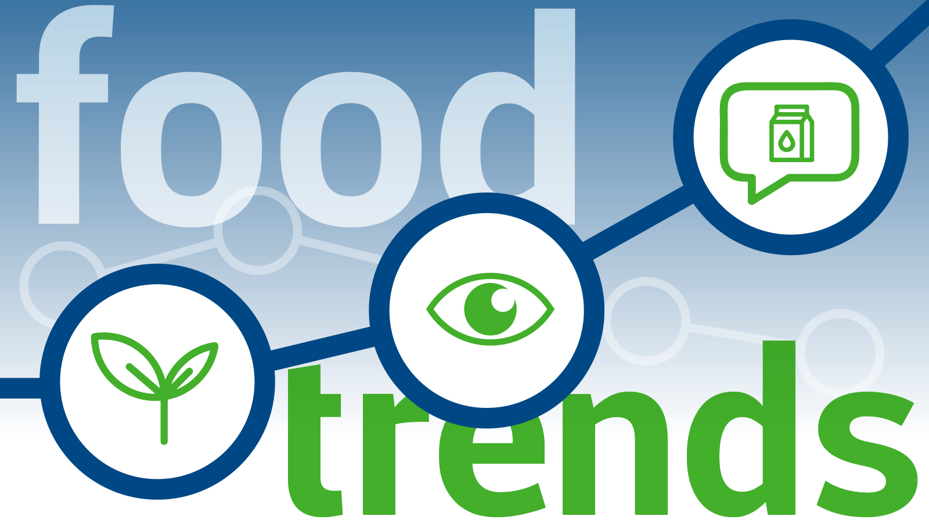
3 Food Industry Trends with the Power to Reshape Public Health
|
Product Lifecycle Management
|
Food & Beverage
Posted By:
Trace One

This content was first presented by Barbara Ruhs, MD, RD during Trace One's 2018 User Conference keynote.
When Walmart became the top seller of organic foods in the United States, it was clear the market had changed. Each year, consumers demand greater nutritional clarity and healthier choices from the food and beverage companies they trust. This presents an opportunity, not just for business growth, but for the food industry to accelerate the movement toward stronger public health outcomes.
In her keynote at the 2018 Trace One User Conference, Barbara Ruhs, MD, RD, delivered findings from her career as a consultant in retail health and wellness, and a vision for how the food industry could lead the way to a healthier future: “Now, more than any other time in history, the food industry has the greatest opportunity to transform public health through product innovation.”
Here are three of the trends she cites as evidence and inspiration toward product leadership.
Trend #1
With mainstream focus on health, what’s good for consumers is good for business.
Consumer Goods Forum reports preferences have drifted from the traditional three: price, taste, and convenience. Current preferences include a broader, more nuanced spectrum, including health and wellness, transparency, safety, social impact, and experience, which can tip the balance of price and taste factors.
Ruhs cites peanut butter as an example: “No-stir peanut butter was supposed to be a ‘healthy’ product innovation, but the first ingredient was hydrogenated oil. Customers today would rather see the oil separate, and see only peanuts on the nutrition label.” This shift means better nutrition for consumers, and bigger sales for manufacturers.
The Mintel Report noted that 78% of US shoppers are concerned about the nutritional content of the foods they eat, and more than 70% of consumers report that they make a healthy effort.
“Natural is mainstream now, not just a separate part of the store,” Ruhs says. For example, “Halo Top was the #1 seller in pint ice cream last year.” With this change in purchase motivation, food and beverage companies are more incentivized than ever to double down on development of natural, healthy foods, with the potential to create a virtuous cycle of healthy products, healthy outcomes, and healthy spending.
Trend #2
Customers expect transparency in product labeling, which, in turn, encourages cleaner products.
Although the interest and desire for wellness are growing, consumers still feel an uncomfortable degree of confusion about how to make healthy choices. This is especially true when they’re standing in the grocery store aisle. The 2018 Food and Health Survey found fewer than 38% of consumers were able to identify specific foods that could help them achieve specific health outcomes. Ruhs expounds, “If you have cholesterol and you’re standing in the store, what do you choose? What do you look for?”
This desire for clarity and simplicity has lead to the rise of Clean Labels, a fast-growing trend that, according to Ruhs, are here to stay. In her article The Retail RD: Deciphering Clean Labels, she defines Clean Labels as “products that are minimally processed, have shorter ingredient lists, and are free from artificial ingredients (eg, sweeteners, colors, flavors), added hormones, GMOs, and allergens.”
Ruhs says shoppers look specifically at three spheres when they read the label:
- Ingredients: Fewer is better, and they should be easy to pronounce.
- Sustainability: Consumers care about reducing environmental impact and the $680 billion in food waste produced by industrialized nations.
- Processing: Labels that tout minimal processing are more desirable than their processed counterparts.
“Transparency is a code for health and wellness,” Ruhs summarizes. “Clean Labels can be used to your advantage.”
Trend #3
The rise of the supermarket dietitian is good news for consumers and product manufacturers.
A clean label can only do so much to engage and educate consumers. Fortunately, “Retailers have skin in the game, and are as invested as product manufacturers to help with wellness. You may not be able to message all these things on a product label. You’re dealing with ingredients, sourcing, and so on, but there is an ally on your side – retailers. Retailers are hiring registered dieticians to help with this,” writes Ruhs.
The inclusion of dietitians onsite at supermarkets is part of a larger push expand consumer experiences, services, and solutions. It helps to fill the knowledge gaps between health goals and the ingredients and products that can move consumers forward.
Ruhs comments that this has already begun to affect product outcomes: “Food manufacturers should take advantage of supermarket dietitians. 80% of consumers indicate that they changed eating habits as a result of interacting with a healthcare provider or a dietician.”
Beyond educating consumers, dieticians are also filling the gap between manufacturers and retailers, by educating buying teams. “Manufacturer brand reps are going into retailers to sell,” writes Ruhs, “but the brand reps and buying teams don’t have a science or diet background. Dieticians can be a middleman to advocate for trends, health and wellness, and new technology and innovation.”
By leaning into the intersection of trends toward healthy products, transparent labeling, and the pivotal role of the dietician, food and beverage companies stand a healthy chance of innovating their way to market leadership.